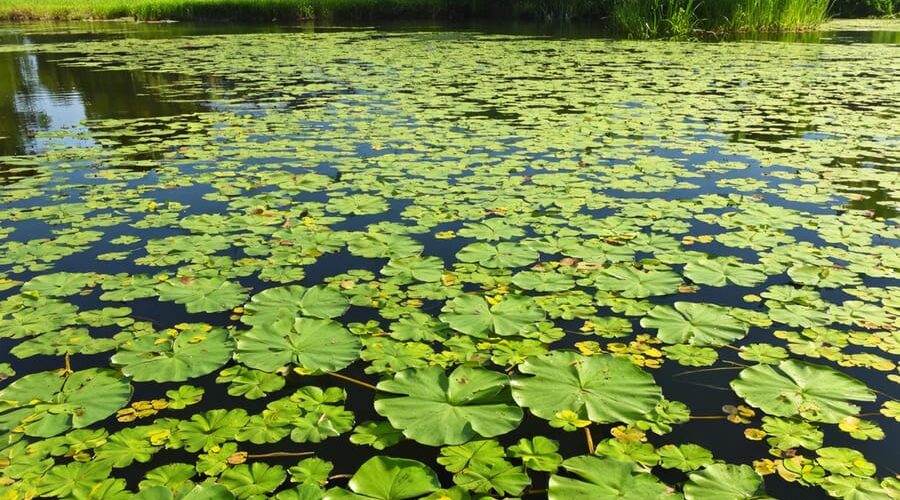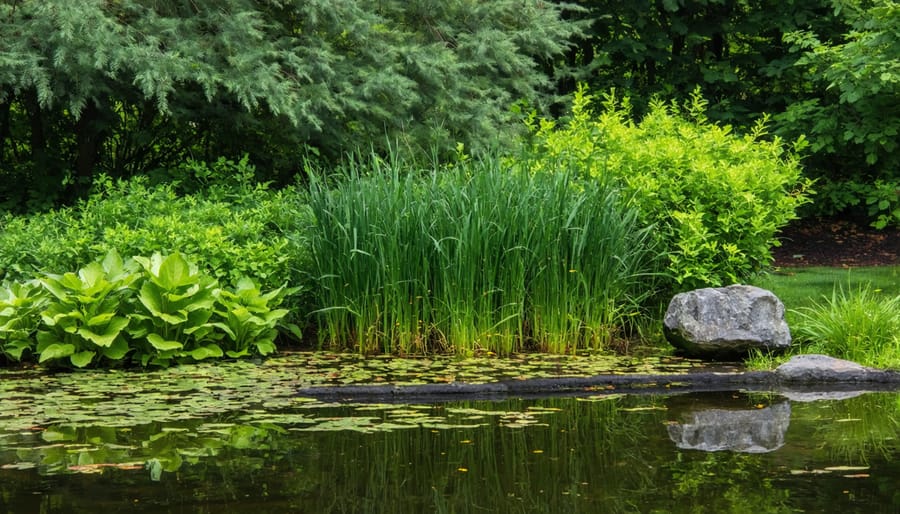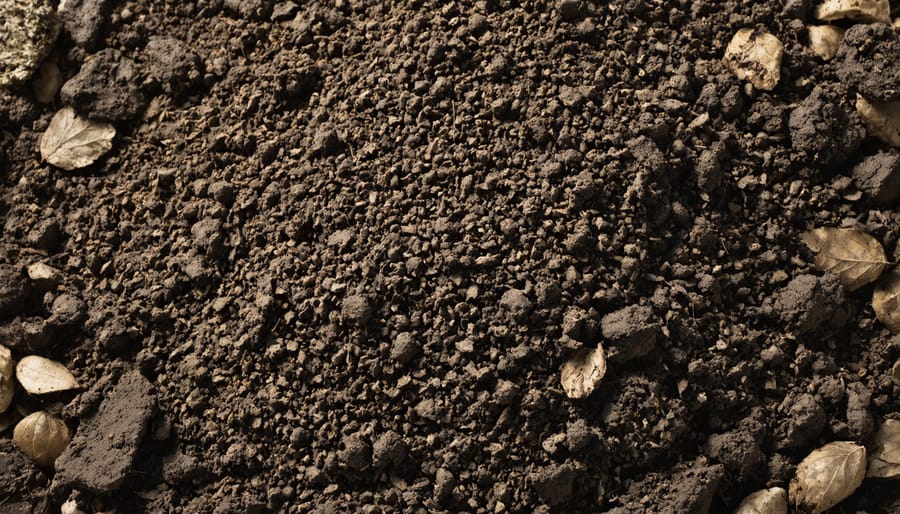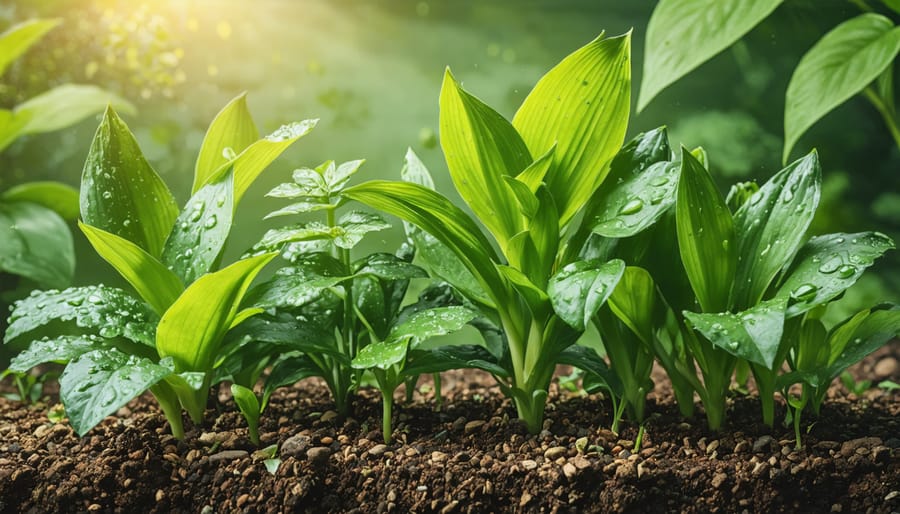
Turn Your Pond Waste into Garden Gold: Smart Treatment Solutions That Work
Transform pond wastewater into a valuable resource by implementing a natural filtration system that creates a self-sustaining ecosystem. Install floating wetland plants like water hyacinth and duckweed to absorb excess nutrients and heavy metals, while naturally oxygenating the water. Position beneficial bacteria colonies within submerged gravel beds to break down organic waste and convert harmful ammonia into harmless nitrogen compounds. Layer the pond with specific zones – settling, anaerobic, and aerobic areas – to maximize treatment efficiency and support diverse microorganisms that naturally purify water.
This natural treatment approach not only cleanses wastewater but also produces nutrient-rich water perfect for garden irrigation, creates wildlife habitats, and reduces maintenance costs. The filtered water becomes a sustainable resource, supporting aquatic life and providing chemical-free irrigation for surrounding landscapes. Best of all, this system mimics nature’s own purification processes, requiring minimal energy input while delivering maximum environmental benefits.
Understanding Your Pond’s Waste System
Common Types of Pond Waste
Every pond naturally accumulates different types of waste that need proper management for a healthy ecosystem. Fish waste is one of the most common, consisting of both solid waste and ammonia-rich excretions that can affect water quality. As fish eat and grow, they produce waste throughout the day that settles at the bottom of your pond.
Plant debris is another significant source of pond waste, especially during seasonal changes. Fallen leaves, dead plant material, and decomposing aquatic vegetation can accumulate quickly, leading to excess nutrients in the water. During autumn, this becomes particularly challenging for pond owners.
Algae, while technically living organisms, become waste when they die and decompose. Algal blooms can create layers of organic matter that need removal, particularly during warmer months when growth is most active.
Sediment builds up over time from various sources, including soil erosion, dust, and decomposed organic matter. This bottom muck can reduce pond depth and provide a substrate for unwanted plant growth. Regular monitoring and removal of these waste types helps maintain a clear, healthy pond environment.
The Hidden Value in Pond Waste
Did you know that pond waste is actually a hidden treasure trove of valuable nutrients? What many pond owners consider a nuisance is actually packed with beneficial compounds that can give your garden a serious boost. The organic matter that accumulates at the bottom of your pond contains high levels of nitrogen, phosphorus, and potassium – the same nutrients you’d find in expensive store-bought fertilizers.
But that’s not all! Pond waste is rich in beneficial microorganisms that can improve soil health and boost plant growth. The decomposed plant matter and fish waste create a nutrient-dense sludge that, when properly treated, becomes an excellent organic fertilizer. Think of it as nature’s own composting system working right in your backyard.
These nutrients are particularly valuable for growing water-loving plants and can be safely used on your garden beds once properly processed. Even the algae that sometimes plagues our ponds contains valuable trace minerals and growth hormones that can benefit terrestrial plants. By understanding the hidden value in pond waste, you can transform what seems like a maintenance headache into a valuable resource for your garden.
Natural Treatment Methods That Save Money
Plant-Based Filtration Systems
Nature has provided us with incredible tools for cleaning pond water, and aquatic plants for filtration are among the most effective solutions. These living filters work tirelessly to remove excess nutrients, harmful chemicals, and even some heavy metals from your pond water.
Water lilies, cattails, and water hyacinths are particularly good at absorbing excess nutrients like nitrogen and phosphorus. These plants act like natural vacuum cleaners, drawing out pollutants through their root systems while adding beauty to your pond. Place them strategically in areas where water enters your pond to create a natural filtering zone.
Creating a dedicated plant filtration zone is simple. Start by setting up a shallow area filled with gravel where water flows through before entering the main pond. Plant marsh marigolds, iris, and rushes in this area – their roots will form a dense network that traps particles and processes waste materials.
For the best results, aim to cover about 30% of your pond’s surface with these beneficial plants. Remember to maintain them regularly by removing dead leaves and dividing overgrown plants every few seasons. This prevents decomposing plant matter from adding nutrients back into the water.
Don’t forget about submerged plants like hornwort and anacharis. These underwater cleaners help oxygenate the water while competing with algae for nutrients. They’re especially useful in deeper areas where floating plants can’t reach.
Using plants for filtration isn’t just practical – it creates a more natural-looking pond that attracts wildlife and enhances your outdoor space. Plus, it’s a sustainable solution that works round the clock without requiring electricity or chemical treatments.

Beneficial Bacteria Solutions
Nature has provided us with amazing tiny helpers for pond water treatment – beneficial bacteria! These microscopic organisms work tirelessly to break down waste, maintaining a healthy balance in your pond ecosystem. Think of them as your pond’s natural cleaning crew, working 24/7 to keep the water crystal clear.
These beneficial bacteria primarily tackle three types of waste: excess nutrients, organic matter, and harmful compounds. They convert fish waste and decaying plant material into less harmful substances through a process called biological filtration. The best part? This process happens naturally – we just need to ensure the right conditions for these helpful microorganisms to thrive.
To boost beneficial bacteria in your pond, start by adding a high-quality bacterial supplement during spring and regular maintenance throughout the warmer months. These supplements contain concentrated forms of naturally occurring bacteria that jumpstart the cleaning process. For best results, add them when water temperatures are above 50°F (10°C), as bacteria are most active in warmer conditions.
You can also support your bacterial workforce by:
– Maintaining proper oxygen levels through aeration
– Avoiding harsh chemicals that might harm beneficial bacteria
– Keeping a balanced fish population to prevent overloading
– Regular removal of excess debris and dead plant matter
– Installing biological filters filled with media that bacteria can colonize
Remember, establishing a healthy bacterial colony takes time, but the results are worth it. Not only will you have clearer water, but you’ll also create a more sustainable ecosystem that requires less maintenance in the long run. Let these microscopic helpers do the heavy lifting while you enjoy your beautiful pond!
Converting Pond Waste into Garden Resources
Creating Rich Compost
Transform your pond waste into nutrient-rich compost with this simple process. Start by collecting debris like fallen leaves, aquatic plant trimmings, and filtered solids from your pond. Create a dedicated composting area away from the pond, ideally on level ground with good drainage.
Layer your pond waste with other organic materials following the “lasagna method.” Begin with a 4-inch layer of brown materials like dried leaves or straw, followed by a 2-inch layer of pond waste. Add a thin layer of garden soil or mature compost to introduce beneficial microorganisms.
Keep the pile moist but not waterlogged – it should feel like a wrung-out sponge. Turn the pile every two weeks to ensure proper aeration and speed up decomposition. The center of the pile should feel warm, indicating active composting.
Monitor the moisture level during dry spells and add water if needed. In about 3-4 months, your compost should be dark, crumbly, and smell earthy. If you notice any unpleasant odors, add more brown materials and turn the pile more frequently.
Use this rich compost to fertilize your garden beds, potted plants, or around pond marginals. The resulting compost is particularly beneficial for water-loving plants due to its unique nutrient profile from aquatic materials.
For best results, maintain a good balance between wet pond waste and dry materials, and avoid adding any diseased plants or algae blooms to your compost pile.

Liquid Fertilizer Production
Transform your pond water into a nutrient-rich liquid fertilizer with this simple process. Start by collecting water from your pond’s maintenance cleaning or during partial water changes. Pour the collected water through a fine mesh strainer to remove any large debris, leaves, or floating matter.
For best results, let the filtered pond water sit in a covered container for 24-48 hours. This allows any remaining solid particles to settle at the bottom. The middle layer of water will be clearest and most suitable for fertilizer production. Carefully siphon or pour this clearer water into a separate container, leaving the settled material behind.
To enhance the fertilizer’s potency, you can add beneficial microorganisms by mixing in a cup of mature compost tea per gallon of filtered pond water. The resulting mixture is rich in nitrogen, phosphorus, and other essential nutrients that plants love.
Use this liquid fertilizer at a ratio of 1:10 (one part pond water to ten parts fresh water) when applying to your garden plants. It’s particularly effective for leafy greens, flowering plants, and vegetable gardens. Apply the diluted solution directly to the soil around your plants, avoiding contact with leaves to prevent potential algae growth.
For storage, keep the fertilizer in a cool, dark place and use it within two weeks for the best results. Remember to label your containers clearly and keep them out of reach of children and pets.
Safe Application Methods
When using treated pond waste in your garden, it’s essential to follow proper application methods to ensure safety and maximize benefits. Always start by testing the treated waste to confirm it’s properly processed and safe for use. A simple pH test kit can help determine if the material has reached appropriate levels for garden application.
For liquid applications, dilute the treated pond waste with fresh water using a 1:10 ratio. This mixture can be applied directly to soil using a watering can or garden sprayer during the early morning or late evening to prevent leaf burn. Avoid applying during peak sunlight hours or when rain is forecasted within 24 hours.
For solid waste applications, incorporate the material into your existing compost pile or spread it as a thin layer around established plants, keeping it away from direct contact with stems and leaves. A quarter-inch layer is typically sufficient for most garden applications. These methods align perfectly with sustainable gardening practices while making the most of your pond resources.
Always wear gloves when handling treated waste and wash your hands thoroughly afterward. It’s recommended to wait at least two weeks after application before harvesting any edible crops. Monitor your plants for any adverse reactions and adjust application rates accordingly. Keep detailed records of when and where you apply the treated waste to track its effectiveness and maintain optimal garden health.

Maintenance Tips for Sustainable Treatment
Seasonal Care Schedule
Regular maintenance throughout the year is crucial to effectively maintain natural pond balance and keep your wastewater treatment system running smoothly. In spring, focus on removing winter debris and checking filtration systems as biological activity increases. Add beneficial bacteria to jumpstart the treatment process and trim any emerging aquatic plants.
Summer demands weekly water testing and more frequent filter cleaning due to increased biological activity. Monitor water levels and top up as needed, while keeping an eye on algae growth. Add shade plants if necessary to reduce excessive sunlight exposure.
Fall preparation includes removing fallen leaves before they sink and decay. Reduce feeding as temperatures drop and trim back dying plant matter. Clean out settling tanks and check all mechanical components.
During winter, maintain minimal filtration to prevent freezing, and use a de-icer if necessary. Remove any ice buildup around aerators and keep a small area free from ice for gas exchange. Avoid disturbing the bottom sediment during this dormant period.
Troubleshooting Common Issues
Even the best-maintained pond systems can encounter issues, but most problems have straightforward solutions. If you notice a strong odor coming from your pond, this usually indicates poor oxygen levels. Adding an aerator or increasing the running time of your existing one can quickly resolve this. For cloudy or green water, check your filtration system for clogs and consider adding beneficial bacteria to help break down excess nutrients.
When sludge builds up at the bottom of your pond, it’s often due to overfeeding or inadequate filtration. Reduce feeding amounts and use a pond vacuum to remove excess debris. If you spot algae blooms, temporarily shade your pond and add aquatic plants to compete with algae for nutrients.
pH imbalances can stress your biological treatment system. Test your water regularly and adjust levels gradually using appropriate treatments. For sudden increases in ammonia levels, perform a partial water change and ensure your biological filtration is functioning properly. Remember that most issues develop gradually, so regular monitoring helps catch problems early before they become serious.
Implementing a pond wastewater treatment system is a smart investment that pays dividends for both your garden and the environment. Not only does it help maintain crystal-clear water and healthy aquatic life, but it also turns waste into valuable resources for your garden. By following the methods we’ve discussed, you can create a sustainable cycle where pond waste becomes nutrient-rich fertilizer for your plants. The best part? Most of these solutions are cost-effective and can be set up by any enthusiastic pond owner. Whether you’re a beginner or experienced gardener, taking this step toward eco-friendly pond management will enhance your outdoor space while contributing to environmental conservation. Start small, experiment with different techniques, and watch as your pond transforms from a maintenance challenge into a self-sustaining ecosystem that benefits your entire garden.
